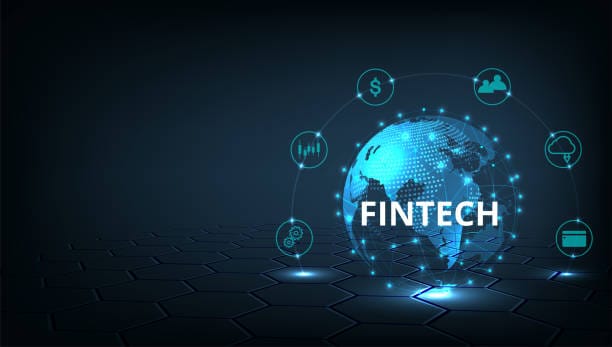In the crowded streets of global finance, a quiet but unstoppable revolution has been taking place. It is not fought with banners or armies but with algorithms, apps, and code. It is whispered through smartphones, embedded in invisible networks, and carried on the wings of innovation. Its name is Fintech — short for financial technology — a term that has grown from industry jargon into a global phenomenon.
But what exactly is fintech? Is it just about mobile banking apps? Cryptocurrency? Robo-advisors? In truth, it is all of those things and more — a transformation in how we think about, use, and interact with money. To understand fintech is to understand one of the defining shifts of our era: the merging of financial services and cutting-edge technology into a seamless, data-driven, and increasingly democratized system.
The Origins of a Financial Revolution
Although the term fintech feels modern, its roots stretch back far before smartphones and blockchain. Technology has always shaped finance, from the invention of double-entry bookkeeping in Renaissance Italy to the rise of telegraphs enabling transatlantic currency trading in the 19th century.
In the 1950s, credit cards emerged, turning purchases into a promise rather than an immediate exchange of cash. In the 1970s and 1980s, ATMs and electronic stock trading began to change how people interacted with their money. These were early fintech innovations, even if no one called them that yet.
The term “fintech” itself entered the professional vocabulary in the early 1990s, often referring to the back-end systems that powered banks and stock markets. But the explosion we now associate with fintech began in the 21st century, fueled by the internet, smartphones, and cloud computing.
When Finance Met the Smartphone
Imagine a world where moving money meant long lines at the bank, paperwork in triplicate, and rigid banking hours. That world still existed as recently as the early 2000s. Then came mobile technology. Suddenly, a bank could live in your pocket, ready at your fingertips at 2 p.m. or 2 a.m.
Early online banking portals gave customers a taste of freedom, but the true leap came with smartphone apps. Sending money across the world could be done in seconds. Splitting a restaurant bill no longer required exact change — a few taps on a screen could settle the score. Investing in the stock market, once the realm of brokers and trading floors, became as simple as downloading an app and swiping to buy.
The Democratization of Finance
Fintech’s most powerful promise is access. For centuries, the financial system operated as an exclusive club. Opening an investment account required a certain income level. Getting a loan demanded not just creditworthiness but connections. Cross-border payments were slow and costly, effectively locking millions out of global commerce.
Fintech changed the game. Peer-to-peer lending platforms connected borrowers directly with lenders. Crowdfunding sites allowed entrepreneurs to raise capital from thousands of strangers without ever setting foot in a bank. Payment services made it possible for small market vendors to accept digital payments with nothing more than a smartphone.
In emerging economies, fintech has been even more transformative. Millions of people in countries without extensive banking infrastructure have gained financial access for the first time through mobile payment systems. In Kenya, for example, the launch of M-Pesa turned basic cellphones into banking devices, enabling users to send, receive, and store money securely.
Beyond Payments: The Expanding Universe of Fintech
For many, the word fintech conjures images of sleek payment apps or shiny cryptocurrency exchanges. But the scope is far broader. Fintech touches nearly every aspect of finance — lending, investing, insurance, regulatory compliance, personal budgeting, even real estate transactions.
Consider robo-advisors — algorithm-driven investment platforms that manage portfolios with minimal human intervention. They’ve made professional-grade wealth management available to ordinary investors at a fraction of the traditional cost. Or think about insurtech, where data analytics and machine learning enable insurance companies to price risk more accurately, offer tailored policies, and process claims in record time.
Even regtech — regulatory technology — has emerged to help financial institutions comply with complex laws more efficiently, reducing costs while increasing transparency.
The Blockchain Breakthrough
No conversation about fintech can ignore the impact of blockchain technology. Introduced to the world in 2009 with Bitcoin, blockchain is a decentralized ledger system that records transactions in a way that is secure, transparent, and resistant to tampering.
Cryptocurrencies were the first major application of blockchain, promising a new form of money not controlled by any government. But blockchain’s potential extends beyond currency. It can be used for smart contracts — self-executing agreements with the terms directly written into code. It can create secure digital identities, enable transparent supply chains, and even support decentralized finance (DeFi) platforms where traditional intermediaries like banks are bypassed entirely.
The Rise of Artificial Intelligence in Finance
Artificial intelligence has become fintech’s silent partner, powering everything from fraud detection to personalized financial advice. When you get a notification about suspicious activity on your card within seconds of an unusual transaction, that’s AI at work. When your investment app suggests shifting your portfolio based on your goals and risk tolerance, it’s often an algorithm making the call.
Machine learning models digest vast amounts of data — spending patterns, market trends, credit histories — and produce insights that no human analyst could match in speed or scale. This data-driven decision-making has made financial services more responsive, more personalized, and often more cost-effective.
Security, Trust, and the Human Factor
Yet, fintech is not without its shadows. As financial services move online, the threats evolve too. Cybersecurity is the battleground where trust in fintech will be won or lost. Data breaches, identity theft, and fraudulent transactions are real risks that require constant vigilance.
Trust, in finance, is everything. A single high-profile security failure can shake user confidence for years. Fintech companies must therefore invest heavily not just in encryption and authentication, but in transparency — letting users know exactly how their data is used, stored, and protected.
The human factor matters here. Technology can make transactions faster and more convenient, but people still want to know that there is accountability, that someone is ultimately responsible when things go wrong.
Regulation in the Age of Fintech
The rapid pace of fintech innovation has often outstripped the ability of regulators to keep up. Laws written for a paper-based banking system can feel clumsy when applied to instant cross-border crypto transfers or AI-driven lending decisions.
Some governments have embraced the challenge, creating “sandbox” programs where fintech startups can test new products under regulatory supervision. Others have struggled to balance consumer protection with the desire to encourage innovation. The tension between regulation and disruption is one of the defining features of fintech’s evolution.
Cultural Shifts in the Way We Relate to Money
Fintech is not just changing the tools we use — it is altering our relationship with money itself. Digital wallets and instant payments make spending almost frictionless, which can lead to overspending for some and increased convenience for others.
Investment apps with gamified interfaces have brought a wave of new traders into the market, some armed with deep research, others chasing trends. Social media and finance have merged into phenomena like “meme stocks,” where community sentiment can send share prices soaring or crashing within hours.
Money, once something tangible we could hold and count, is increasingly an abstract flow of digits across screens. This shift has psychological effects we are only beginning to understand.
The Global Landscape of Fintech
The shape of fintech varies dramatically across the world. In China, “super apps” like WeChat and Alipay have integrated payments, shopping, social networking, and investment in a single platform. In Europe, open banking regulations have forced traditional banks to share customer data with authorized fintechs, fostering competition and innovation.
In Africa, mobile money services have leapfrogged traditional banking in many areas. In North America, venture capital has poured billions into fintech startups tackling everything from student loan refinancing to crypto trading platforms.
Each region reflects its own unique mix of technology adoption, regulatory environment, and cultural attitudes toward finance.
The Future of Fintech: Where Do We Go From Here?
Looking ahead, fintech seems poised to become even more embedded in daily life. Advances in biometric authentication could make passwords obsolete. Decentralized finance may continue to erode the role of traditional banks. AI could evolve into digital financial assistants that know our spending habits better than we do — for better or worse.
But with opportunity comes responsibility. Fintech has the power to include or exclude, to empower or exploit. The same algorithms that can expand access to credit can also perpetuate bias if not carefully designed. The same blockchain systems that promise transparency can be used for shadowy transactions.
The Human Story at the Core
In the end, fintech is not just about apps, code, or investment rounds. It’s about people — the small business owner who can sell to the world without a single physical storefront; the migrant worker who can send money home instantly without losing a week’s wages to fees; the young investor who can start building wealth with just a few spare dollars; the retiree who can manage savings securely from a tablet.
The technology is dazzling, but the real story is human. Fintech is, at its heart, a story of connection — between people and their money, between individuals and the global economy, and between innovation and the timeless human desire for security, opportunity, and growth.






